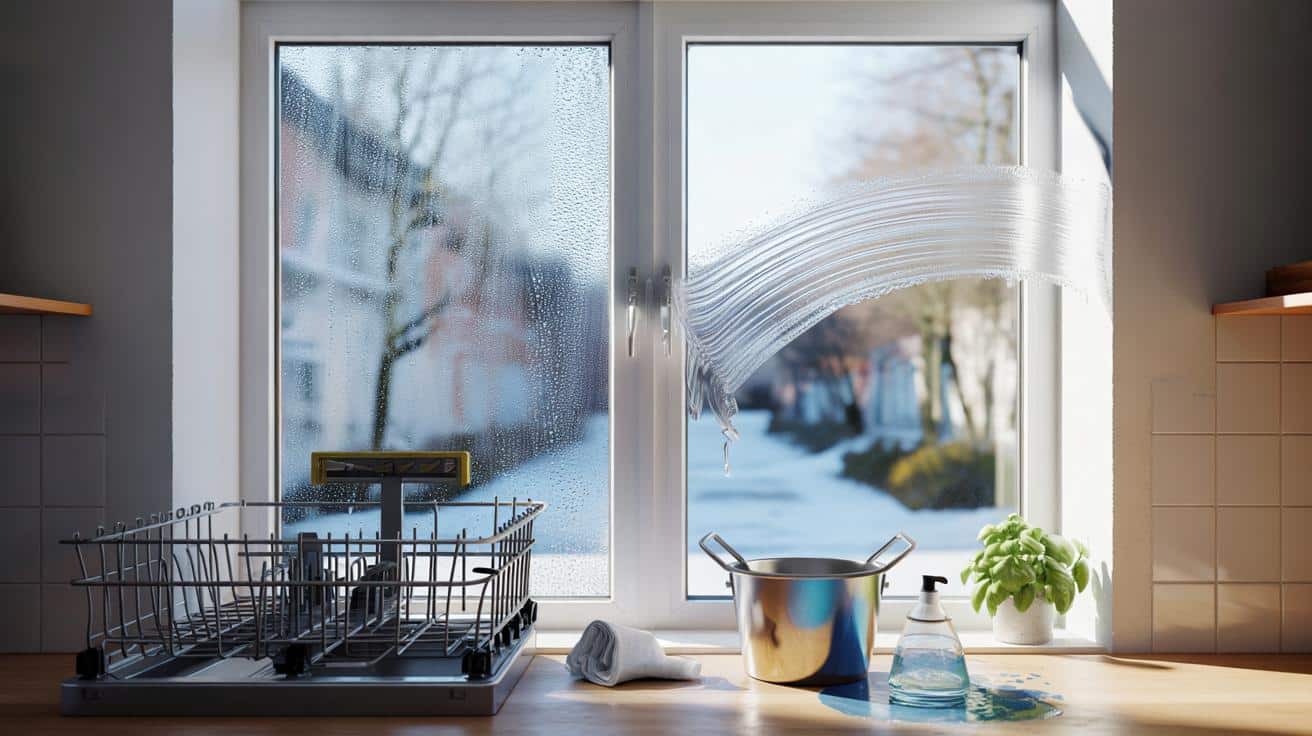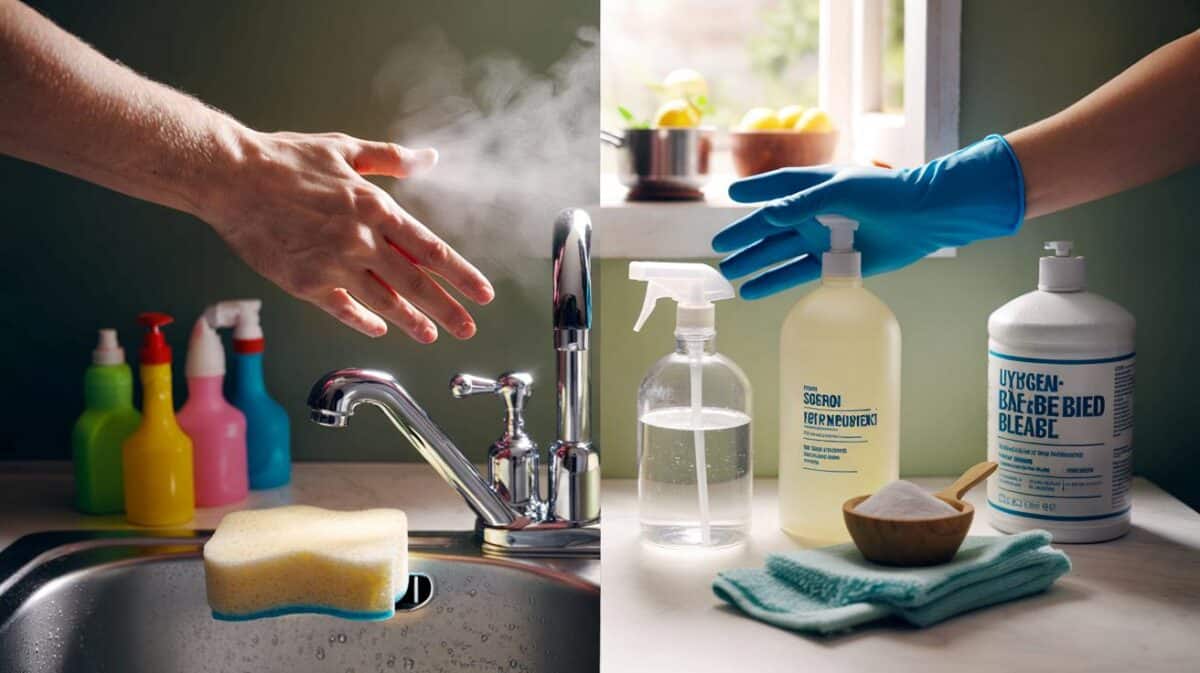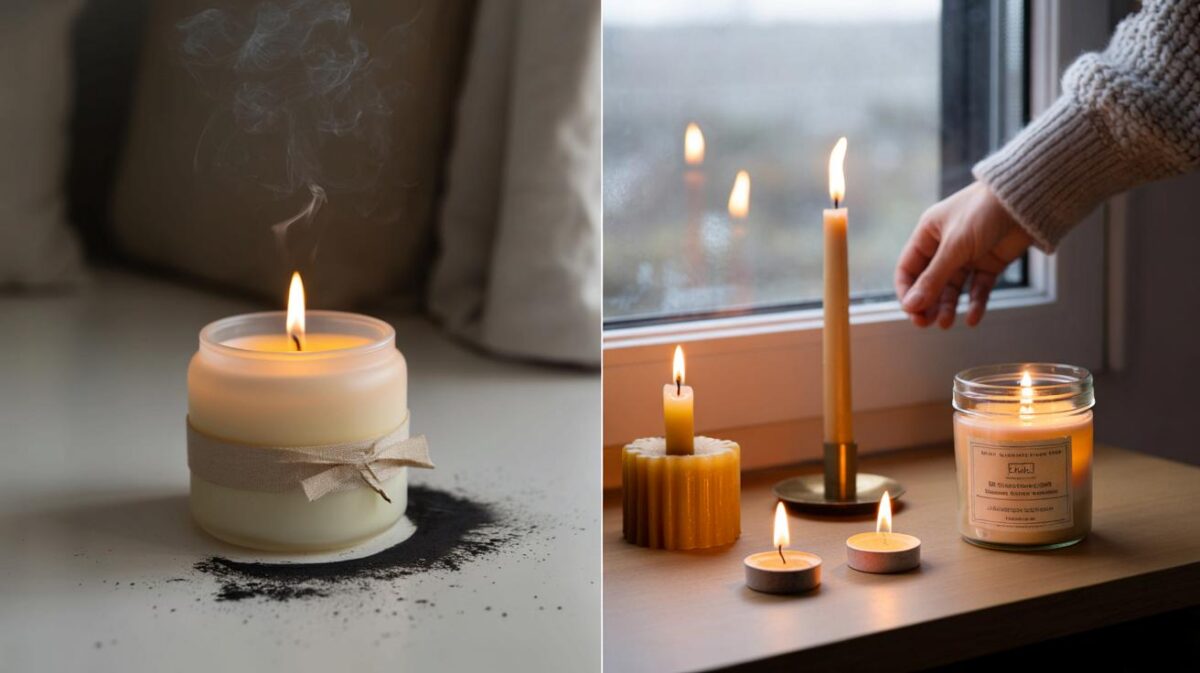On bright winter mornings the sun is brutally honest. Every smudge shows up, every streak mocks you, and those panes you thought were “fine” are anything but. Here’s the twist: the secret to streak-free windows until spring begins in the least glamorous place — your dishwasher.
The street yawns awake. Sunlight punches through the glass and paints a map of fingerprints and drips across the floor. You tilt your head, squint, try the sleeve trick, and make it worse. That’s the moment a small domestic truth lands with a clatter of cutlery: your windows are only as clean as the kit that touches them.
I learned it watching a neighbour in a South London block, the sort who keeps basil alive in January. She loaded her dishwasher with microfibre cloths, the squeegee head, even the tiny latches from her sash windows. The glass, a day later, looked like it had been switched on. There’s a quiet bit of chemistry at play here.
It involves a micro-dose of dishwasher rinse aid, a warm bucket, and a rhythm you can do with a podcast. Nothing fancy. Just clean tools, a better surfactant, and a way to stop greasy kitchen air from settling back onto the panes. The surprising part sits behind a stainless-steel door.
Why your spotless window starts in the dishwasher
Streaks are rarely just dirt. They’re residue from old soap, fabric softener left in cloths, tiny flecks of lint, and a film of kitchen grease that drifts and settles. Wipe that onto glass and you polish a problem into a pattern. Clean tools give glass nowhere to hide.
Your dishwasher is a quiet genius at this. It heat-washes microfibres and squeegee heads so they release oils you’d never rinse out at the sink. It purges gunk from bottle nozzles and sprays that love to spit grime back at the pane. Load them on the top rack, skip heat-dry, and you’ve reset your kit in one go.
Then there’s rinse aid. The same sheeting action that stops water spots on wine glasses helps water slide cleanly off windows. Less beading, fewer circles, no chalky finish. Pair a tiny drop with warm water and a touch of washing-up liquid and you’ve just upgraded your window solution without spending on a new bottle. **Clean tools, cleaner glass.**
The story the glass tells (and how to change it)
Last January, I tried this on a flat above a café where air always felt slightly buttery. The first pass smeared like marmalade. So I paused, ran the microfibres and squeegee through the dishwasher on a quick cycle, and reset. Second pass: the smear line vanished. The edge dried crisp. It wasn’t a showroom. It felt like fresh air.
We’ve all had that moment when a low sun exposes everything. The trick is to set the scene in your favour. Pick a bright but cloudy day, or late afternoon, when glass is cool. Work one pane at a time. Rinse the rubber blade every pass. You’re not fighting the window. You’re removing a thin, stubborn story of life at home.
There’s a logic to it. Warm water lowers viscosity, so oils let go. Rinse aid breaks surface tension, so water sheets rather than clings. Microfibre lifts, doesn’t push. A clean squeegee edge pulls water cleanly, which is why a dull blade writes streaks like bad handwriting. **Use a micro-dose of rinse aid**, not a glug, or you’ll trade spots for film. And yes, the dishwasher is where your edge gets its edge back.
The method: a dishwasher-powered window routine
Start by cleaning the cleaners. Top rack: microfibre cloths, removable squeegee head, spray bottle tops, and any small, detachable window hardware. Quick or eco cycle, no heat-dry. Skip fabric softener elsewhere in life if those cloths ever go in the wash. When they come out, they feel “grippy” again. That’s the texture that lifts instead of smearing.
Mix your solution: 3 litres warm water, a tea-saucer splash of white vinegar, a pea-sized squeeze of washing-up liquid, and a single tiny drip of rinse aid. Stir gently. For exterior panes coated in traffic film, dissolve half a dishwasher tablet in a separate bucket of hot water, test on a corner, then wash and follow with your main solution. Let the glass be cool, not hot to touch. Sun on glass is the enemy of a clean finish.
Common pitfalls? Too much soap leaves streaks. Paper towels shed lint like confetti. Wiping in circles pushes grime around the pane’s centre and forgets the edges where runs start. Let’s be honest: nobody does this every day. So pick small wins — do the worst window first, then stop. Your future self will thank you when the light comes round. *Clean one pane well beats five rushed.*
“Think of rinse aid like a spice,” says Tom, a window cleaner who works rain or shine in Brighton. “A pinch transforms the dish. A spoonful ruins dinner.”
- Prep: Run your cloths and squeegee through the dishwasher first.
- Mix: Warm water + tiny drip of rinse aid + light wash-up liquid + vinegar.
- Method: S-shape pulls with a clean blade, wipe edges with dry microfibre.
- Prevention: Keep the dishwasher closed after cycles until steam cools.
- Weekly: Quick top-rack refresh for cloths stops mystery smears.
Keep it spotless till spring
Windows don’t stay clean by accident. They stay clean because the air around them is kinder and the tools that touch them are truly clean. Close the dishwasher at the end of a cycle and crack a window for five minutes while the kitchen cools. That quick swap — less steam on glass, less grease on air — slows down the return of the film that makes you reach for a cloth.
Make a little ritual of it. After Sunday’s roast, pop your cloths and squeegee head in the top rack. On a mild afternoon, do one room. Keep a small bottle of your window mix under the sink and a blade on the sill you ignore most. The goal isn’t museum glass. It’s daylight that feels bigger, a view that stops nagging, and a home that looks like it breathes. **Skip paper towels** and you’ll save money while you’re at it.
| Key points | Detail | Reader Interest |
|---|---|---|
| Start with the dishwasher | Deep-clean microfibres, squeegee heads, and spray nozzles on the top rack, no heat-dry | Surprising, easy win that resets your kit |
| Rinse aid micro-dose | Add a single tiny drip to warm water for sheeting action and fewer spots | Clever chemistry borrowed from sparkling glassware |
| Right method, right moment | Cool glass, S-shaped pulls, edge wipe, and a no-sun rule | Practical moves that deliver instant, visible results |
FAQ :
- Can I put microfibre cloths in the dishwasher safely?Yes, top rack on a quick cycle with no heat-dry works well. Don’t use fabric softener anywhere in their life, as it kills the “grab”.
- How much rinse aid should go in the bucket?Think one tiny drip per 3 litres. If you can smell it, you’ve likely used too much.
- Will a dishwasher tablet damage window glass?Used diluted and as a pre-wash on very grimy exterior panes, it’s fine. Test a corner and avoid painted frames or bare timber.
- Why avoid cleaning in direct sun?Warm glass flashes the water off before you can pull it clean, locking streaks in place. Shade gives you time to finish the pass.
- How do I stop condensation streaks after washing up or running the dishwasher?Keep the dishwasher closed for ten minutes after the cycle and crack a window or run an extractor. Less steam, fewer tracks.








